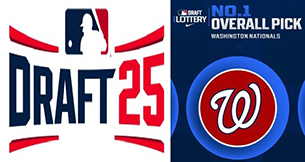
A Seemingly Mundane Substance with a Rich History
Baseball mud, a seemingly mundane substance, plays a crucial role in the game. It is used to condition baseballs, enhancing their grip and durability. While it may seem like a simple product, the history of baseball mud is surprisingly rich and complex.
Early Origins: A Natural Resource
The earliest use of mud to condition baseballs can be traced back to the game’s early days. Players would often gather mud from nearby fields or streams to apply to their hands or the baseballs themselves. This practice was more of a necessity than a deliberate strategy, as the leather baseballs of the time were prone to becoming slippery and difficult to handle.
The Search for the Perfect Mud
As baseball became more organized and professional, teams began to search for the ideal mud to condition their baseballs. The goal was to find a mud that would provide the best possible grip while also maintaining the ball’s shape and durability.
The Birth of Mud Brands
In the early 20th century, commercial mud brands began to emerge. These companies would collect mud from specific locations and process it into a usable form. One of the most famous early mud brands was “Rubbing Mud,” which was popular among teams in the American League.
The Secret Ingredient: Location, Location, Location
The quality of baseball mud is heavily influenced by its location. The ideal mud is typically found in clay-rich soil near rivers or streams. These conditions create a unique mixture of minerals and organic matter that gives the mud its desired properties.
The Mud Wars: A Battle for Supremacy
Throughout baseball’s history, there have been numerous “mud wars” between teams and leagues. Teams would often guard their secret mud sources jealously, believing that the quality of their mud gave them a competitive advantage.
The Modern Era: Standardization and Regulation
In recent years, there has been a push to standardize the use of baseball mud. Major League Baseball (MLB) has implemented regulations to ensure that all teams use approved mud sources. This has helped to level the playing field and reduce the importance of mud as a competitive advantage.
The Official Mud: A Secret Ingredient of Major League Baseball
The approved source for baseball mud in Major League Baseball (MLB) is Lena Blackburne Baseball Rubbing Mud. This New Jersey-based company has been supplying mud to MLB teams for decades. The mud is sourced from a secret location in New Jersey and is carefully processed and prepared before being distributed to the various teams.
The Cost of Baseball Mud
While the exact cost of baseball mud is not publicly disclosed, it is believed to be relatively low compared to other expenses incurred by MLB teams. The mud itself is a natural resource, and the processing and preparation costs are likely minimal. However, the cost of shipping the mud to various stadiums around the country can add to the overall expense.
Anecdotes
Nolan Ryan preferred dark baseballs and would have them rubbed twice:
- Explanation: Ryan believed the darker color gave him an advantage over batters by making it harder for them to determine the ball’s rotation.
- Clubhouse comment: One clubhouse noted that Ryan liked “em black”.
- Historical practice: Teams use about three to four pounds of mud per season, and pitchers often prefer darker balls.
Conclusion
Baseball mud, a seemingly simple substance, has played a significant role in the history of the game. From its early origins as a natural resource to its modern-day use in Major League Baseball, mud has continued to be an essential component of the sport. While the use of mud has become more standardized, its importance in providing a consistent and reliable grip for baseballs remains unchanged. As baseball continues to evolve, the role of mud will likely remain a constant, ensuring that the game can be played at the highest level.










